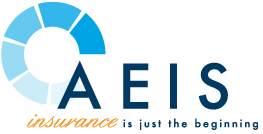An Introduction to Self-Funding | California Benefits Advisors
If your organization is looking to save money on health coverage while maintaining a reliable standard of care for your employees, self-funding could be right for you. As an alternative to a traditional fully insured health plan, self-funding is a particularly attractive option for firms whose employees are generally young and healthy. If you’re considering self-funding as an approach to healthcare for your organization, you’ve come to the right place. Read on for our employee benefits and insurance experts’ introductory guide to self-funding.
What is self-funding?
You’re likely already familiar with the concept of a fully insured health plan. This is the type of insurance coverage where the employer does not assume any exposure to the financial risk of varying claims made by their employees. Rather, an insurance company agrees to pay employee claims in exchange for a high monthly cost, known as a premium. If you have a fully insured health plan, the premium you’ll pay as an employer will remain the same from month to month, regardless of the actual cost of claims made by your employees.
Self-funding is a slightly different animal. When an employer chooses a self-funded health plan, they’ll put aside a set amount of money based on what they expect their employees’ claims will total each month. They’ll also set aside money for administrative fees and stop-loss insurance.
Employees will have an experience similar to if they were covered under a fully insured health plan. They’ll go see doctors and pharmacies within a network. But when it comes time to pay claims, the employer will pay the claim bill from the money they set aside at the beginning of the month.
Benefits of self-funding:
- If your workforce is younger or healthier than the average American worker, you could save money through self-funding. Instead of paying a high premium and letting your claim costs come out of a larger pool, you're paying solely for your employee's (and their dependents') claim costs.
- With self-funding, you have the ability to customize your coverage to fit your employees’ unique needs.
- In a self-funded plan, the money set aside to pay for expected costs generates interest for your business. As the employer, you keep the money accrued, rather than seeing that interest turn over to the insurance company.
- When your company doesn’t have to pre-pay for health coverage, you’re able to free up your cash flow, using the money how you see fit.
- If you choose to self-fund, your company will not be subject to state health insurance premium taxes.
- Self-funding allows employers to avoid the high premiums and significant fixed costs associated with fully insured health plans.
- Self-funding allows employers to mitigate the premium fluctuations you’re likely to experience (sometimes without explanation) from fully insured health plans.
Disadvantages of self-funding:
- Self-funding comes with inherently more risk than using a fully insured health plan. With a fully insured health plan, an insurance company assumes the risk of all medical claims. This stability can be attractive to some organizations.
- While stop loss insurance usually caps the total amount of losses for self-insured employers annually, it may not mitigate damages from month to month.
- Variable costs can be overwhelming for some smaller firms.
How to take care of administrative tasks if your business chooses to self-fund:
In deciding whether to self-fund, a common concern for employers is how they'll be able to take care of all the administrative tasks that come with managing claims and payments. As a self-insured company, you have a couple of options. Sometimes, the insurance company will be able to take on administrative tasks such as management of payments, though the employer will actually pay the claims.
Oftentimes, however, an employer will hire a third-party administrator or a "TPA." A TPA handles claim processing for the employer and can even take on tasks like the collection of premiums and claim review. Delegating these tasks to a TPA is generally recommended but is not technically required and companies can always decide to handle administration in-house by expanding their human resource or finance departments' capabilities. Deciding to handle it in-house, even with a certified HIPAA Officer, can open an employer up to potential HIPAA violations, so it is usually not recommended.
How to handle the risks involved with self-funding:
The most important hurdle to jump in consideration of self-funding as an option is the financial risk associated with claim variability. Companies can and do insure against annual overwhelming damage amounts. This type of insurance is called "stop-loss insurance." Stop-loss coverage protects an employer annually, but not monthly, beyond a predetermined point.
You should be aware of two types of stop-loss insurance: specific, or individual stop-loss, and aggregate stop-loss insurance. Specific stop-loss coverage protects employers from excess risk stemming from a single high claim made by an individual employee. Employers would benefit from specific stop-loss coverage in the event of a severe illness or accident. On the other hand, Aggregate stop-loss insurance protects employers through an entire predetermined period. This type of coverage places a ceiling on the monetary amount of claims in the aggregate across all employees and dependents.
Deciding whether self-funding is the right choice for your organization:
After learning about self-funding, you’ll want to weigh the pros and cons of this approach to health coverage for your organization. It always helps to talk to employee benefits and insurance experts, and Advanced Estate & Insurance Services, Inc. (AEIS) is here to help. AEIS is a strategist, advocate, and advisor for businesses looking to select, optimize, and maintain the perfect employee benefits package.
AEIS brings more than 35 years of experience in the industry to your advantage. Looking to simplify your benefits processes? It’s time to reach out. Contact AEIS today.
Disclaimer: Any information related to compliance, laws and regulations, or other subject matters in this blog is intended to be informational and does not constitute legal advice regarding any specific situation. The content of this blog is based on the most up-to-date information that was available on the date it was published and could be subject to change. Should you require further assistance or legal advice, please consult a licensed attorney.



